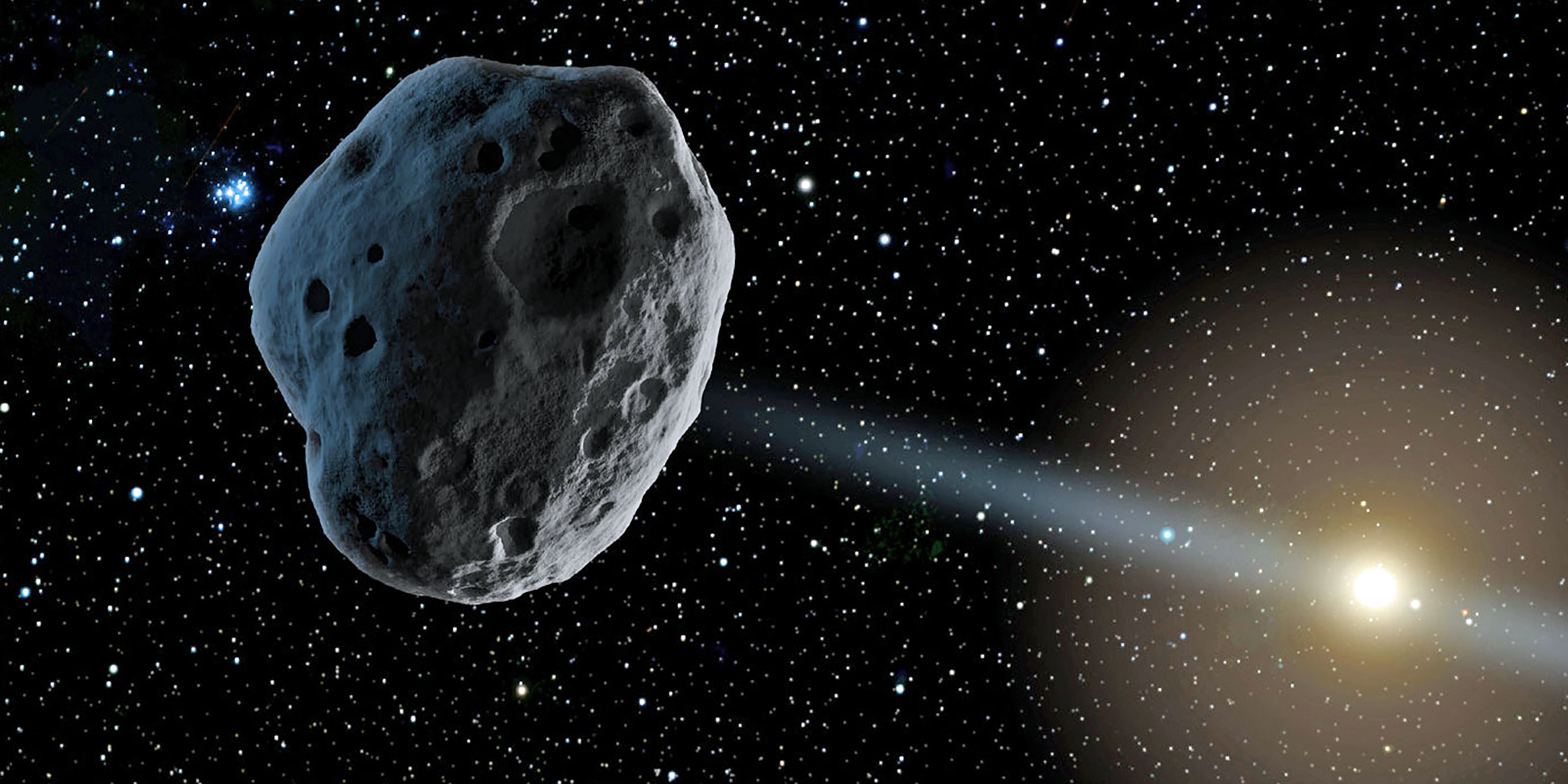Originally published 22 May 1989
Antoine de Saint-Exupéry’s Little Prince lived on a world so small he could watch a dozen sunsets in a single evening just by moving his chair westward around the circumference of his tiny planet. His planet had a few weeds and three volcanoes, two active, one extinct; the Little Prince kept the active volcanoes unviolent by periodic cleaning with a Q‑tip sort of swab.
It would be cruel to turn the cold eye of science on so charming a tale. So I will not point out that the Little Prince’s tiny planet would have too little gravity to retain an atmosphere, or for that matter a prince. Or that so small a planet would have long since lost whatever internal heat might cause an untended volcano to erupt. But this much is true: There are lots of tiny planets in our solar system that would make perfectly delightful habitats for imaginary princes.
The official list of minor planets (also called asteroids) exceeds 4,000 objects. The largest of them, Ceres, is about the size of the state of Texas and was discovered as long ago as 1801. The smallest of them are the size of football stadiums. Vast numbers of even smaller objects whirl about the solar system undetected. Even stadium-sized minor planets are unlikely to be observed unless they pass near the Earth.
A minor planet on March 23, 1989 came within 450,000 miles, traveling at a speed of 50,000 miles per hour. No asteroid has been observed so close to Earth since 1937, when a body the size of Boston Common passed by at about the same distance. Half-a-million miles may sound comfortably removed, but it’s roughly equivalent to a stray bullet passing within 25 feet of your head. You wouldn’t want to take that risk every day.
A 380-day orbit
The new asteroid was detected by astronomer Henry Holt, of Northern Arizona University, as it sped away from its close encounter with the Earth. Holt was searching photographs made with a telescope at Palomar Observatory for the tracks of minor planets whose orbits intersect the orbit of the Earth. The object has been designated 1989 FC in accordance with the official numbering system of the International Astronomical Union (The name of the Little prince’s planet, B‑612, is entirely unofficial.)
Holt’s near-miss asteroid goes around the sun in 380 days compared to Earth’s 365 days. Twice in each revolution it intersects Earth’s orbit, but a close approach (or a strike!) will occur only if the Earth is in the same place at the same time. According to Brian Marsden of the Smithsonian Astrophysical Observatory, 1989 FC will next approach within a million miles of Earth in August 2012.
Another object discovered in January 1989, designated 1989 AC, will approach within 2 million miles of Earth in 1992, and within a million miles in 2004. The latter encounter will be the closest near-miss ever predicted in advance.
Most of the known minor planets move in orbits that lie between Mars and Jupiter — the so-called asteroid belt — and stay safely away from Earth. They probably represent material from the early history of the solar system that never managed to collect together to form a major planet, perhaps because of the gravitational influence of Jupiter.
Collisions and gravitational interactions among objects in the asteroid belt cause some of them to go into orbits that take them inward toward the sun. Those that cross the Earth’s orbit, the Earth-grazers, are obviously of considerable interest to astronomers, geologists and biologists. The impact of a minor planet with Earth could have considerable influence on the history of life.
The Earth is pocked with the scars of impacts. Some ancient craters are hundreds of miles across. Perhaps the most dramatic impact site is the mile-wide crater near Winslow, Arizona. It is the freshest crater on Earth — about 25,000 years old — and was blasted by an object 100 feet in diameter. The collision released an energy equivalent to hundreds of H‑bombs. If such an object slammed into Arizona today the consequences would be too terrible to contemplate.
A very close call
On August 10, 1972, a much smaller object entered the Earth’s atmosphere on a grazing trajectory that took it back into space. It was first sighted over Utah (in broad daylight!) and disappeared over Alberta, Canada, and passed within 35 miles of the surface. That’s like a bullet flying through the hair on your head without actually striking you. Had the object hit the Earth’s surface the energy released would have been comparable to a small atomic bomb.
These kind of things are flying all around out there. It is inevitable that now and then a good-sized object will hit the Earth. It doesn’t pay to dwell too long on the subject of asteroid impact. A dangerous impact could happen today or not for thousands of years. Since there is nothing we could do to deflect an asteroid, even if we saw it coming, it is just as well to put the whole subject out of mind.
Imagine instead that the solar system’s millions of minor planets all keep to neat orbits in the space between Mars and Jupiter, and that each one is inhabited by a Little Prince who pulls the weeds and cleans the volcanoes, including the extinct one (“One never knows,” said the Little Prince). The advantage of fantasy over science is that we are allowed to think the universe tidier and safer than it actually is.
1989 AC, now designated as 4581 Asclepius, will make its next close pass of Earth on 24 March 2051, at a comfortable distance of over 1 million miles. ‑Ed.



